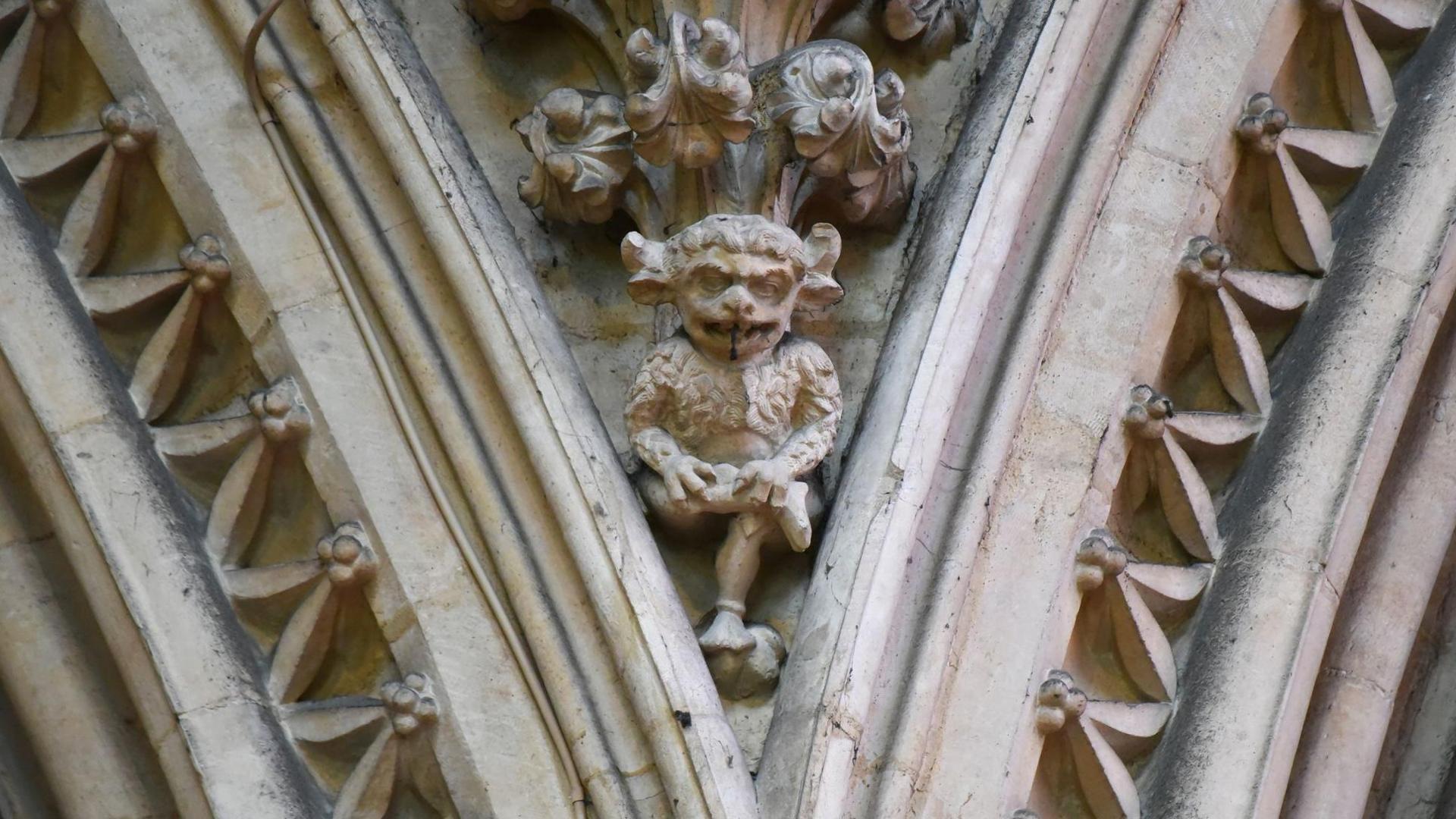The day the devil's lesser known imp was petrified

The Grimsby imp is portrayed holding his sore bottom after being spanked by an angel
- Published
Some may be familiar with the legend of the Lincoln imp - sent by the devil to the the city's cathedral to cause mayhem before being turned to stone by an angel.
But, according to local historian and North East Lincolnshire tour guide, Emma Lingard, his lesser known accomplice, reputed to be a twin, was just as "mischievous" and deserves his story to be heard.
Legend has it the second imp fled to Grimsby Minster after hiding under a table during the melee in Lincoln.
But, after "gleefully dancing" among the collapsed ruins of the tower after a fire ravaged the church, he met with a similar fate, Ms Lingard said.

The Lincoln imp was turned to stone after running amok in the cathedral
The story goes that the devil sent his imps out to play, and the wind blew two of them to Lincoln.
At first, they were said to be so awestruck by the splendour of the cathedral and were afraid to enter.
But, after plucking up the courage, one of the imps set about causing mayhem, which included breaking windows, tripping up the bishop and teasing the choir.
When the angels told him to stop, he cheekily replied "stop me if you can".

Ms Lingard said the Grimsby imp remained relatively unknown compared to its counterpart in Lincoln
Ms Lingard said the imp was throwing insults and rocks at the angel, who responded by turning him to stone, or so the story goes.
The other imp, who was said to be terrified, fled to Grimsby.
But, following his own indiscretions in the aftermath of the fire, the imp was "severely spanked" and imprisoned, before being turned to stone and placed for all eternity to hold up the tower after it was rebuilt, Ms Lingard said.
The Grimsby imp is portrayed holding his sore bottom as proof the angel spanked him, she added.
The Grimsby Imp: a tale of mischief and stone
So, where do these fanciful tales actually come from?
Many churches were constructed in the early medieval period, when it was common for people not to be able to read or write, Ms Lingard said.
This meant statues and stained glass windows were used as a means for people to visualise stories that had been passed down the generations, she said.
"The story behind it is about not letting the church fall and about doing good deeds," she added.
Despite references to the Grimsby imp dating back to the 1930s, Ms Lingard said many people were still not aware of this "little mischievous creature that's up there".
"It might not be as impressive as the Lincoln imp, but he's certainly got an interesting story," she added.
Listen to highlights from Lincolnshire on BBC Sounds, watch the latest episode of Look North or tell us about a story you think we should be covering here, external.
Download the BBC News app from the App Store, external for iPhone and iPad or Google Play, external for Android devices
Related topics
Related stories
- Published8 November

- Published25 December 2023

- Published16 April 2024
